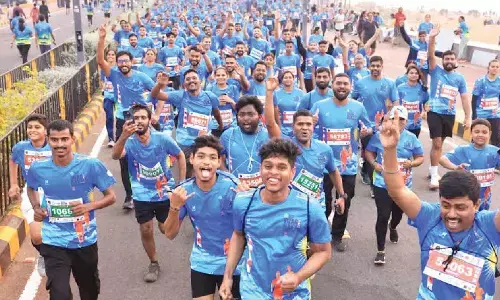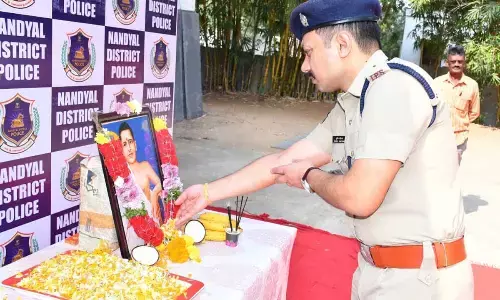Countdown for launch of EOS-08 and Space Rickshaw satellites to begin early Friday morning
Share :

The countdown for the launch of India’s small rocket -- Small Satellite Launch Vehicle (SSLV) -- carrying earth observation satellite (EOS-08) and SR-0 satellite belonging to the startup Space Rickshaw will begin at around 2.30 a.m. on Friday, senior officials said.
Chennai: The countdown for the launch of India’s small rocket -- Small Satellite Launch Vehicle (SSLV) -- carrying earth observation satellite (EOS-08) and SR-0 satellite belonging to the startup Space Rickshaw will begin at around 2.30 a.m. on Friday, senior officials said.
The countdown for this mission is very short. It will begin at 2.30 a.m. on Friday for the launch at 9.17 a.m. the same day, senior officials told IANS.
The mission named SSLV-D3/EOS-08 will be the third and final developmental flight for SSLV after which the rocket will get into full-fledged operational mode.
On Friday at about 9.17 a.m., the SSLV with a carrying capacity of 500 kg will blast off laden with the 175.5 kg microsatellite EOS-08 with a life expectancy of one year.
According to the Indian Space Research Organisation (ISRO), the proposed mission will complete the SSLV Development Project and enable operational missions by the Indian industry and public sector player NewSpace India Ltd.
The SSLV rocket is capable of launching Mini, Micro or Nano satellites (10 to 500 kg mass) into a 500 km planar orbit.
The rocket’s three stages are powered by solid fuel while the final Velocity Trimming Module (VTM) is powered by liquid fuel.
Just over 13 minutes after the blast off, the rocket will orbit EOS-08 and about three minutes later, the SR-0 will be separated. Both the satellites will separate from the rocket at an altitude of 475 km.
For Chennai-based space sector startup Space Rickshaw, the SR-0 will be its first satellite.
“We will be making six more satellites on a commercial basis,” Srimathy Kesan, Co-Founder, Space Rickshaw, and Founder-CEO, Space Kidz India, told IANS.
Meanwhile, the primary objectives of the EOS-08 mission include designing and developing a microsatellite, creating payload instruments compatible with the microsatellite bus, and incorporating new technologies required for future operational satellites, ISRO said.
Built on the Microsat/IMS-1 bus, EOS-08 carries three payloads: Electro Optical Infrared Payload (EOIR), Global Navigation Satellite System-Reflectometry payload (GNSS-R), and SiC UV Dosimeter.
The EOIR payload is designed to capture images in the Mid-Wave IR (MIR) and Long-Wave IR (LWIR) bands, both during day and night, for applications such as satellite-based surveillance, disaster monitoring, environmental monitoring, fire detection, volcanic activity observation, and industrial and power plant disaster monitoring.
The GNSS-R payload demonstrates the capability of using GNSS-R-based remote sensing for applications such as ocean surface wind analysis, soil moisture assessment, cryosphere studies over the Himalayan region, flood detection, and inland water body detection.
ISRO said the SiC UV Dosimeter monitors UV irradiance at the viewport of the Crew Module in the Gaganyaan Mission and serves as a high-dose alarm sensor for gamma radiation.
EOS-08 marks a significant advancement in satellite mainframe systems such as an Integrated Avionics system, known as the Communication, Baseband, Storage, and Positioning (CBSP) Package, which combines multiple functions into a single, efficient unit.
According to ISRO, the satellite employs a miniaturised design in its Antenna Pointing Mechanisms, capable of achieving a rotational speed of 6 degrees per second and maintaining a pointing accuracy of ±1 degree.
(Venkatachari Jagannathan can be contacted at [email protected])



















